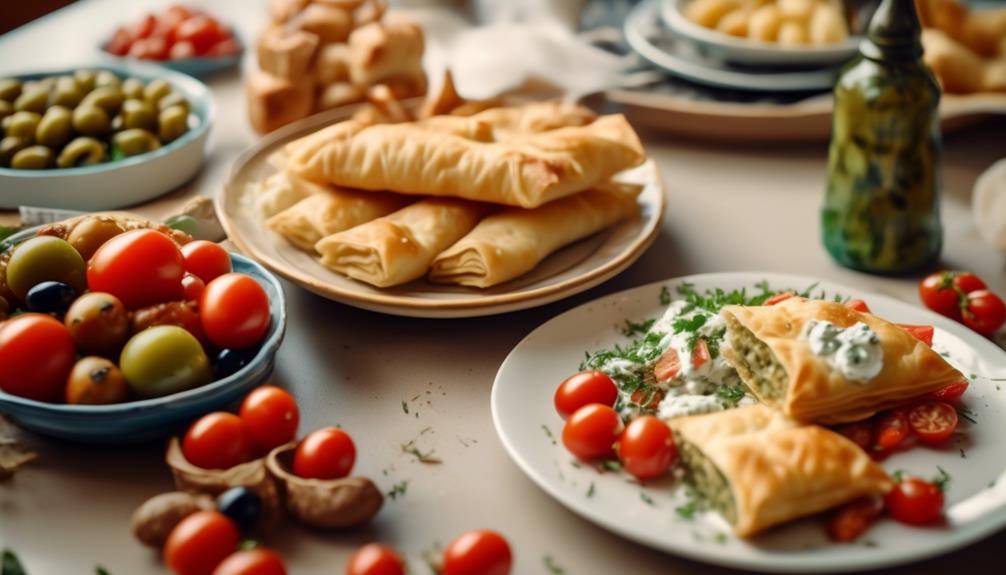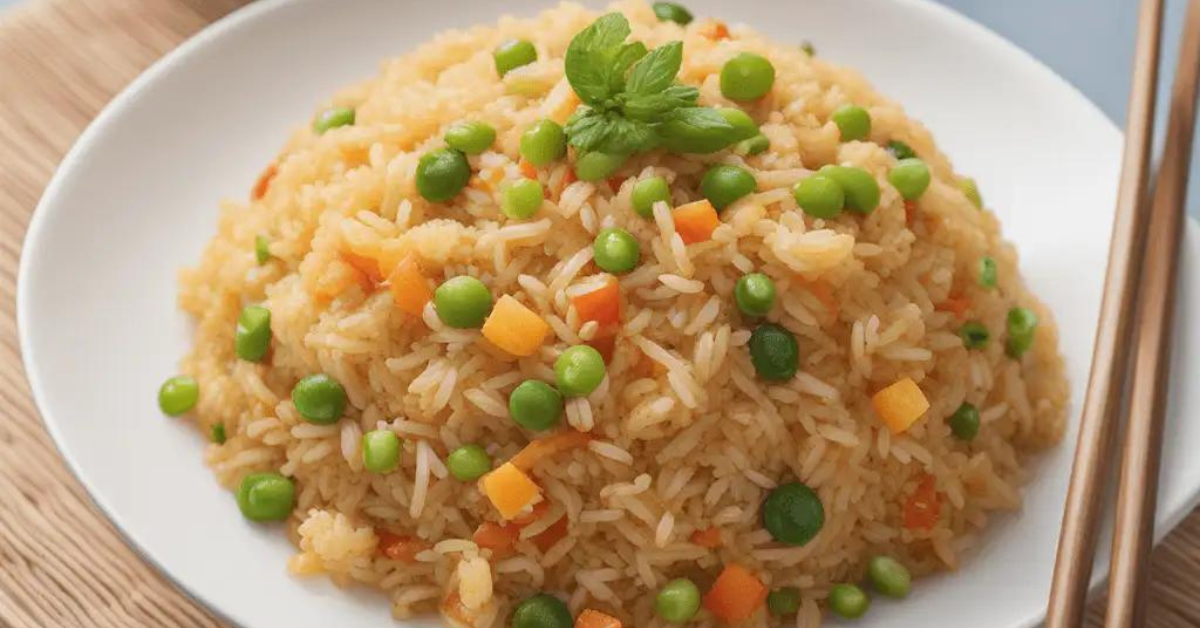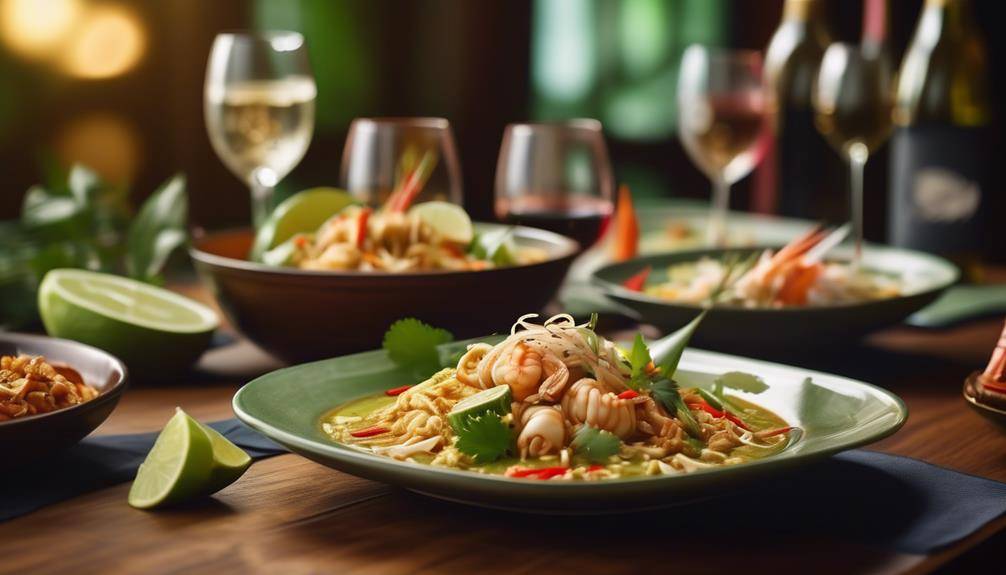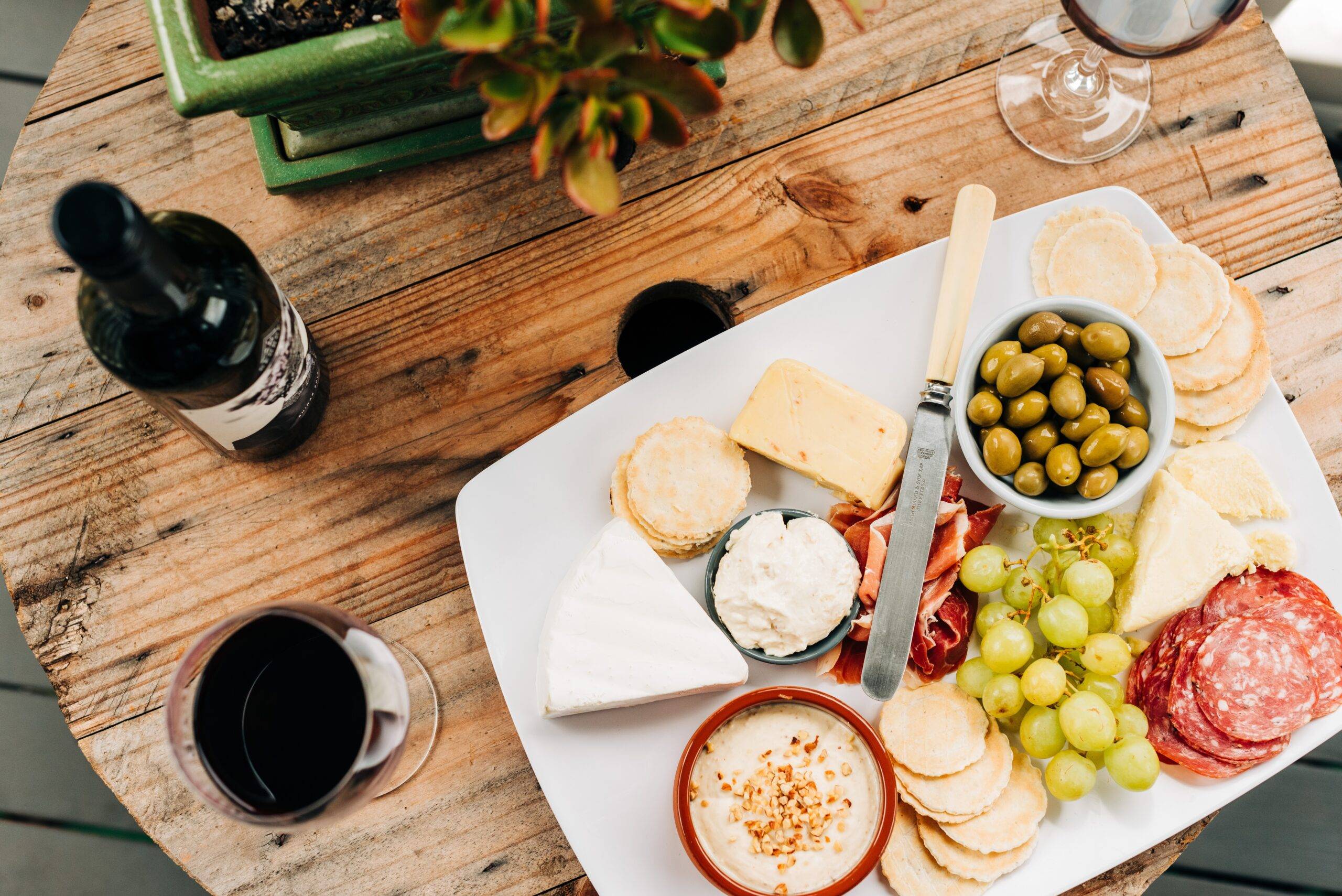How To: Creating Sustainable Swedish Dishes
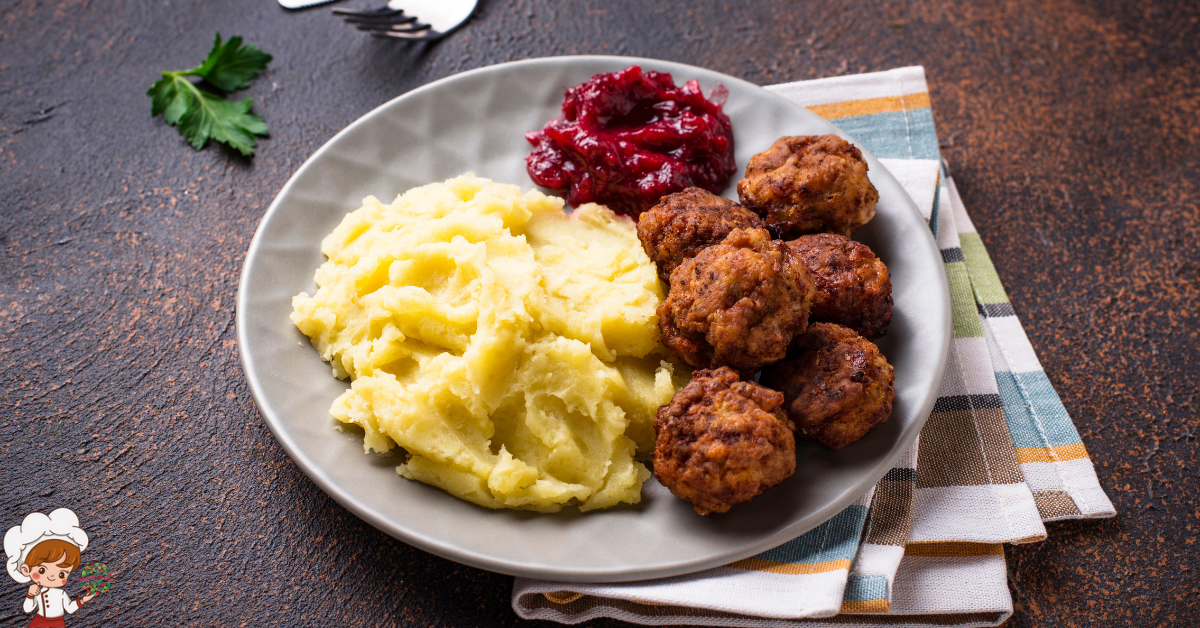
When Creating Sustainable Swedish Dishes, focus on plant-based ingredients and seasonal produce. Swap meat for legumes, whole grains, and local vegetables. Make a habit of visiting farmer’s markets to find fresh ingredients and support local farmers. You can try foraging for wild herbs and berries while respecting nature. Incorporate eco-friendly techniques, like using every part of your ingredients and minimizing food waste through freezing and pickling. Traditional recipes, like meatballs and kanelbullar, can be modified for sustainability. The choices you make in the kitchen can benefit both your health and the planet—there’s so much more to explore!
Understanding Sustainable Cooking
When you think about sustainable cooking, it’s all about making choices that benefit both your plate and the planet. This means being mindful of the ingredients you select and how they’re sourced. One of the most effective ways to embrace sustainability in your kitchen is by incorporating plant-based alternatives into your meals. These options not only reduce your carbon footprint but also provide numerous health benefits.
You might start by replacing meat with legumes, whole grains, and vegetables. For example, try using lentils in place of ground beef for a hearty stew, or swap chicken for chickpeas in your favorite curry. Not only are these alternatives delicious, but they also require fewer resources to produce, making them more sustainable.
Another key aspect of sustainable cooking is ethical sourcing. This means choosing ingredients that are produced in a way that respects both the environment and the people involved in the food chain. Look for local farmers or co-ops that prioritize humane practices, organic farming, and fair trade. By supporting these sources, you guarantee that your meals aren’t just good for you, but also for the communities and ecosystems involved.
Ultimately, understanding sustainable cooking involves making conscious decisions about what you eat. By focusing on plant-based alternatives and ethical sourcing, you can create meals that nourish your body while also protecting the planet for future generations. So, plunge into and start exploring the delicious world of sustainable cooking!
Key Ingredients in Swedish Cuisine
When you explore Swedish cuisine, you’ll notice a strong emphasis on seasonal produce and traditional pantry staples. These ingredients not only highlight the flavors of the region but also promote sustainability. By focusing on what’s in season and using time-honored staples, you can create dishes that are both authentic and eco-friendly.
Seasonal Produce Selection
Although Sweden’s culinary landscape is rich and diverse, the foundation of its dishes rests on seasonal produce that showcases the country’s natural bounty. To create authentic Swedish meals, you’ll want to align your cooking with local harvest calendars, which detail when various fruits and vegetables are at their peak. This guarantees you’re not only supporting local farmers but also highlighting the freshest ingredients available.
When you focus on seasonal flavor profiles, you’ll discover the unique tastes that each season brings. In spring, for example, you might enjoy tender asparagus and radishes, while summer offers an abundance of berries and tomatoes. Autumn introduces hearty root vegetables like carrots and potatoes, and winter brings the comforting flavors of cabbage and preserved goods.
Traditional Pantry Staples
Swedes often rely on a few key pantry staples that form the backbone of their cuisine. When you think about traditional Swedish cooking, ingredients like potatoes, rye flour, and lingonberries come to mind. Potatoes are versatile and can be used in various dishes, from creamy gratins to hearty stews. Rye flour, on the other hand, is essential for baking traditional breads like knäckebröd, offering that distinct nutty flavor.
To maintain these staples, focus on pantry organization. Store your potatoes in a cool, dark place to keep them fresh longer. For rye flour, airtight containers will help preserve its quality and prevent spoilage. Lingonberries, whether fresh or preserved, add a tangy sweetness to many dishes. If you can’t find fresh ones, consider making your own preserves to enjoy throughout the year.
Seasonal Produce Selection
When you shop at local farmers’ markets, you’re not just supporting your community; you’re also choosing the freshest seasonal ingredients. These ingredients offer numerous benefits, from enhanced flavors to better nutritional value. Plus, by practicing sustainable foraging, you can discover unique flavors while respecting the environment.
Local Farmers’ Markets
There’s something special about wandering through local farmers’ markets, where you can discover a vibrant array of seasonal produce. These markets not only offer fresh fruits and vegetables but also create opportunities for community engagement. You’ll find local farmers showcasing their harvests, which fosters a connection between you and the land.
As you explore, you’ll notice the market diversity, featuring everything from heirloom tomatoes to artisanal cheeses. This variety not only makes your shopping experience exciting, but it also allows you to choose produce that’s at its peak flavor and nutritional value. When you buy directly from farmers, you support sustainable practices that benefit both the environment and the local economy.
You might even strike up a conversation with a vendor about their farming methods, gaining insights into how your food is grown. By participating in your local farmers’ market, you’re not just sourcing ingredients; you’re becoming part of a community that values healthy eating and sustainability. So, grab your reusable bags and head out to explore the seasonal delights waiting for you at your nearby market. Enjoy the flavors of your region while supporting those who grow your food!
Seasonal Ingredient Benefits
Choosing seasonal ingredients not only enhances your meals but also supports sustainable practices. When you opt for seasonal produce, you enjoy a wider variety of flavors and textures, making your dishes more exciting. Seasonal variety allows you to experiment with different fruits and vegetables throughout the year, keeping your meals fresh and interesting.
Moreover, seasonal ingredients often boast higher nutritional value. They’re typically harvested at their peak ripeness, meaning they retain more vitamins and minerals. Eating in tune with the seasons guarantees you’re getting the best possible nutrition, which is especially important for supporting your overall health.
Sustainable Foraging Practices
Foraging for seasonal ingredients can elevate your culinary experience while promoting sustainability. To get started, you’ll want to connect with local foraging communities that can guide you in wild plant identification. Understanding foraging ethics is essential; always respect nature by practicing sustainable harvesting techniques.
Make certain you’re aware of local foraging laws, as these can vary by region. When foraging, prioritize edible fungi and seasonal plants that thrive in your area. Attend foraging workshops to enhance your skills and learn about plant preservation methods that help maintain biodiversity.
Safety is paramount when foraging. Confirm you can accurately identify plants before consuming them, as some can be toxic. Familiarize yourself with common edible species and their look-alikes to avoid mishaps.
Foraging for Wild Ingredients
Many people find joy in foraging for wild ingredients, discovering a bounty of flavors hidden in nature’s landscape. It’s an exhilarating adventure that not only connects you with the environment but also enriches your meals with unique tastes. Before diving in, it’s vital to understand foraging ethics. Always respect nature by gathering only what you need, leaving enough for wildlife and future growth. It’s your responsibility to guarantee that your foraging doesn’t harm the ecosystem.
Wild plant identification is essential before you pick anything. Familiarize yourself with both common and potentially toxic plants in your area. Use field guides or mobile apps that help you accurately identify edible species. Take your time and double-check your findings; some plants can look strikingly similar. If you’re uncertain, it’s better to err on the side of caution and leave it alone.
When foraging, choose locations that are free from pesticides and pollution. Remote areas or your own backyard can be excellent spots. You’ll find wild herbs, berries, mushrooms, and greens that can elevate your dishes. Remember to collect responsibly, guaranteeing that you’re not depleting a single area.
Once you’ve gathered your wild ingredients, treat them with the respect they deserve in your cooking. By embracing the flavors of the wild, you’re not only enhancing your dishes but also forging a deeper connection to the land around you. Enjoy the thrill of the hunt and the delights of cooking with nature’s gifts!
Eco-Friendly Cooking Techniques
Embracing eco-friendly cooking techniques can greatly reduce your environmental footprint while enhancing the flavors of your dishes. One effective approach is zero waste cooking, where you utilize every part of your ingredients. For instance, instead of discarding vegetable scraps, consider making homemade broths or composting them. This not only minimizes waste but also infuses your dishes with rich flavors.
Another vital aspect is opting for plant-based alternatives whenever possible. By incorporating more vegetables, grains, and legumes into your meals, you can lower your carbon emissions considerably. Try replacing meat with hearty options like lentils, chickpeas, or mushrooms in traditional recipes. They’re not just nutritious but also delicious and satisfying.
You shouldn’t overlook the importance of mindful cooking methods. Techniques like steaming, roasting, or grilling require less energy than boiling or frying. When you choose to cook in bulk, you not only save time but also energy. Prepare meals for the week using seasonal produce, which is often more sustainable and full of flavor.
Utilizing eco-friendly cooking tools is another great way to enhance your practices. Invest in reusable items like silicone food storage bags and beeswax wraps, which reduce reliance on single-use plastics.
Traditional Swedish Recipes
When it comes to traditional Swedish recipes, you’ll find that they beautifully showcase the country’s rich culinary heritage while often highlighting local and seasonal ingredients. One of the most beloved dishes is meatballs, or köttbullar, which you can easily make at home. Using ground beef or a mix of meats, season them with Scandinavian herbs like dill and thyme to enhance their flavor. Serve these savory bites with creamy gravy, lingonberry sauce, and buttery mashed potatoes for a truly authentic experience.
Another classic is gravlax, a cured salmon dish that’s perfect for gatherings. It’s simple to prepare: coat fresh salmon with a mixture of sugar, salt, and dill, then let it cure in the fridge for a couple of days. The result is a tender, flavorful fish that pairs wonderfully with mustard sauce and crispbread.
Don’t forget about Swedish baking, which plays a crucial role in traditional cuisine. Fika, the cherished coffee break, is incomplete without kanelbullar, or cinnamon buns. These soft, sweet rolls are made with a rich dough, filled with cinnamon and sugar, then twisted into beautiful shapes. The aroma of fresh buns baking will fill your kitchen and invite everyone to indulge.
Tips for Reducing Food Waste
Swedish cuisine offers delicious dishes, but it’s important to enjoy them sustainably by minimizing food waste. One of the best ways to start is by practicing food preservation techniques. When you buy fresh produce, consider freezing, pickling, or fermenting items that you won’t use immediately. This way, you can enjoy your favorite ingredients long after their peak season, reducing the likelihood of spoilage.
Plan your meals ahead of time to avoid overbuying. Create a shopping list based on your weekly menu and stick to it. This not only helps you save money, but it also guarantees you use what you have on hand, minimizing excess. If you notice that certain ingredients are nearing their expiration date, prioritize them in your cooking.
Don’t forget about scraps! Instead of tossing vegetable peels or stale bread, think about how you can repurpose them. For instance, you can use vegetable scraps to create homemade broth or blend stale bread into breadcrumbs.
Sourcing Local Products
Sourcing local products is a key element in enjoying sustainable Swedish dishes. When you choose to source your ingredients locally, you’re not only supporting the environment but also the community. Local sourcing means you’re obtaining your food from nearby farms and producers, reducing the carbon footprint associated with transportation. Plus, you’ll find that the flavors of fresh, seasonal ingredients are unmatched, enhancing your culinary experience.
To get started, establish community partnerships with local farmers, markets, and food co-ops. Visiting farmer’s markets is a great way to connect with producers and learn more about their farming practices. You’ll discover a variety of fresh produce, meats, and dairy products, often with a distinct taste that mass-produced items can’t replicate. By building these relationships, you’ll also gain insight into sustainable practices that can further enhance your cooking.
Consider joining a Community Supported Agriculture (CSA) program, where you can receive a regular supply of fresh, seasonal produce directly from local farms. This not only gives you access to high-quality ingredients but also fosters a sense of community and connection to the land. When you choose local sourcing, you’re actively participating in a sustainable food system, promoting biodiversity, and supporting economic growth in your area.
Lastly, don’t forget to explore local artisans for cheeses, breads, and other specialty items. By prioritizing local products, you’ll create a delicious and sustainable menu that reflects the rich culinary heritage of Sweden.
Meal Planning for Sustainability
Meal planning is essential for creating sustainable Swedish dishes that minimize waste and maximize flavor. By taking the time to plan your meals, you can streamline your grocery shopping, reduce food waste, and guarantee you make the most of seasonal ingredients. Start by mapping out your week—consider what meals you want to prepare and how each dish can utilize similar ingredients. This approach not only enhances efficiency but also encourages creativity in the kitchen.
When it comes to meal prep, focus on versatility. Cook larger portions of staples like root vegetables, grains, or legumes that can be transformed into different dishes throughout the week. For instance, roasted potatoes can star in a hearty stew or become a side for a fish dish. This not only saves time but also keeps your meals interesting.
Don’t forget about budget considerations. Buying seasonal and local products can considerably reduce costs while supporting your community. Plan meals around sales and what you already have in your pantry to further stretch your budget. Create a shopping list based on your meal plan to prevent impulse buys and guarantee you’re only getting what you need.
Frequently Asked Questions: Creating Sustainable Swedish Dishes
What Are the Environmental Benefits of Sustainable Swedish Cooking?
Sustainable Swedish cooking reduces your carbon footprint by emphasizing local ingredients and seasonal flavors. You’re supporting biodiversity, minimizing transportation emissions, and enjoying fresher meals that nourish both your body and the environment. It’s a win-win!
How Can I Adapt Swedish Recipes for a Plant-Based Diet?
To adapt Swedish recipes for a plant-based diet, swap traditional meatballs with vegan meatballs and replace aquavit with a plant-based version. You’ll enjoy the flavors while keeping your meals sustainable and delicious.
Are There Any Specific Kitchen Tools for Sustainable Cooking?
For sustainable cooking, you’ll want eco-friendly utensils like bamboo spatulas and recycled cutting boards. Using seasonal ingredients not only enhances flavor but also reduces your carbon footprint, making your meals healthier for you and the planet.
What Are Common Misconceptions About Swedish Cuisine Sustainability?
You might think Swedish cuisine’s sustainable practices are limited to local sourcing, but many overlook the importance of reducing food waste. Emphasizing both aspects can enhance your cooking while supporting a more sustainable food system.
How Can I Involve Kids in Sustainable Cooking Practices?
Involve kids in sustainable cooking by choosing kid-friendly recipes that spark their interest. Consider organizing cooking classes where they can learn hands-on about ingredients, waste reduction, and the importance of local, seasonal produce.
Conclusion
By embracing sustainable practices in your cooking, you’re not just enjoying delicious Swedish dishes; you’re also making a positive impact on the environment. Remember to focus on seasonal produce, explore local markets, and reduce food waste in your kitchen. With these tips, you’ll enhance your meals while supporting a healthier planet. So, roll up your sleeves, get creative, and savor the flavors of Sweden sustainably—your taste buds and the Earth will thank you!



